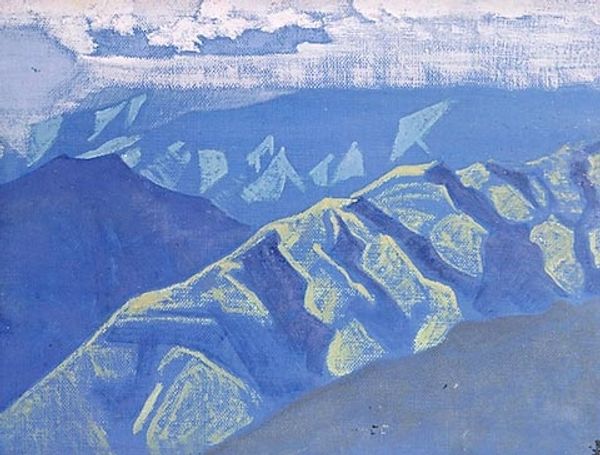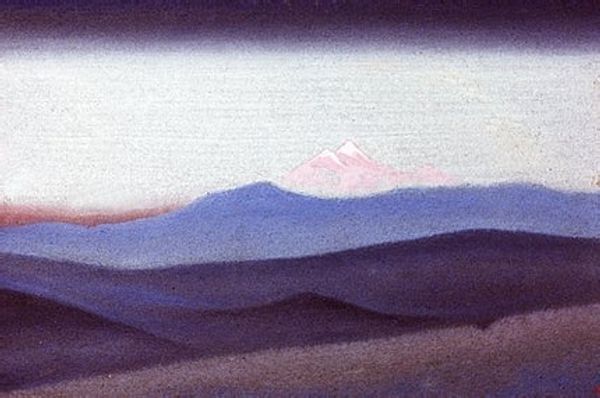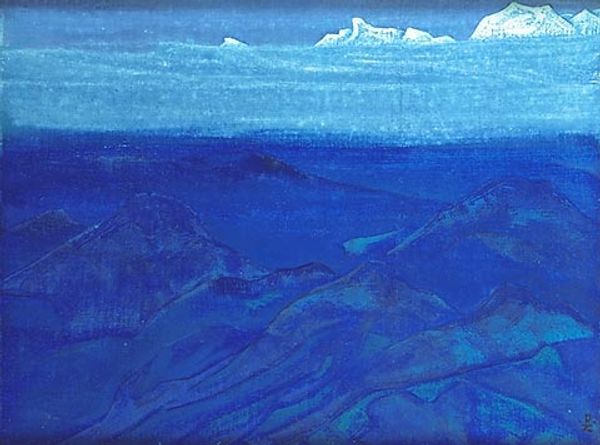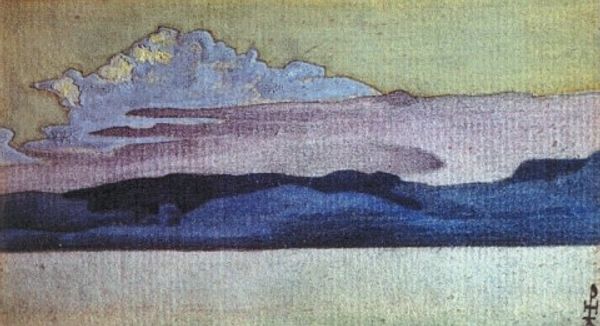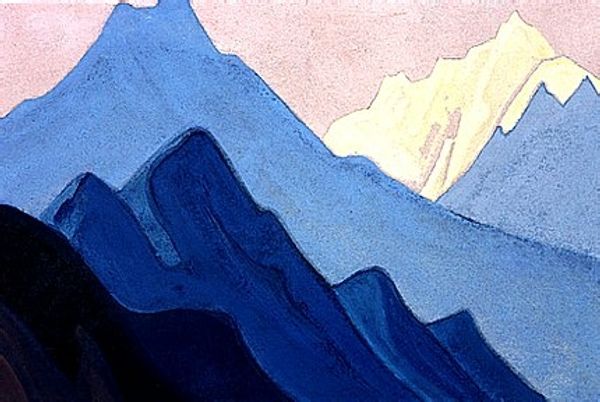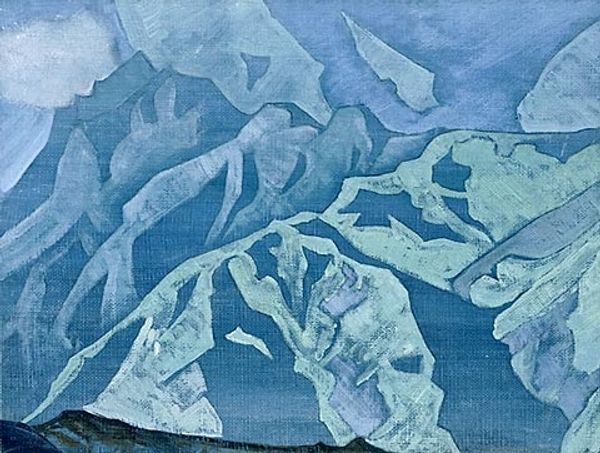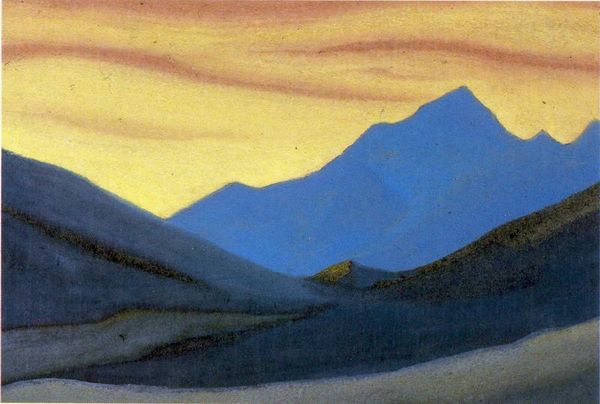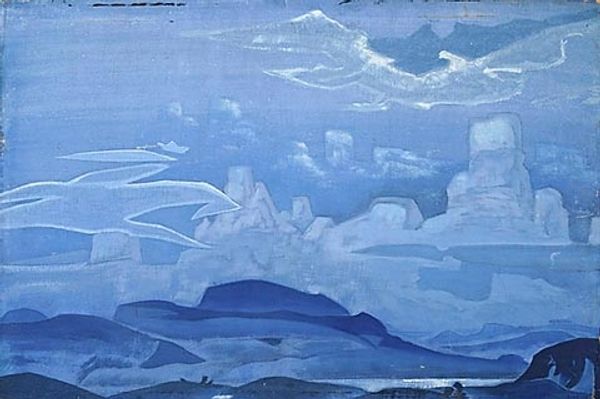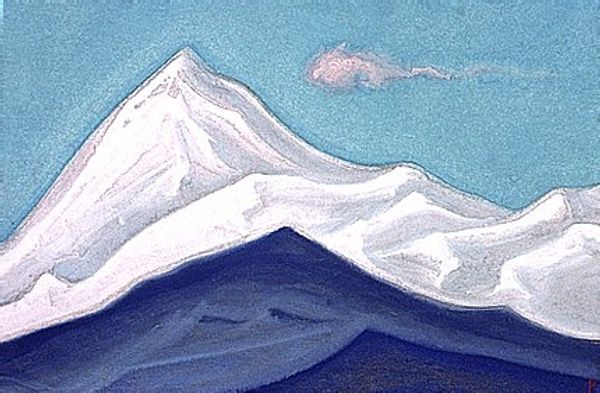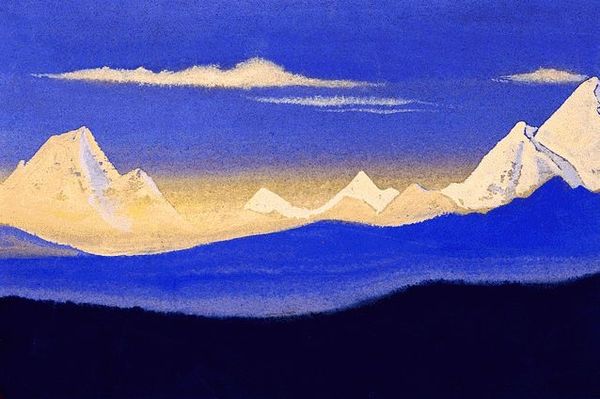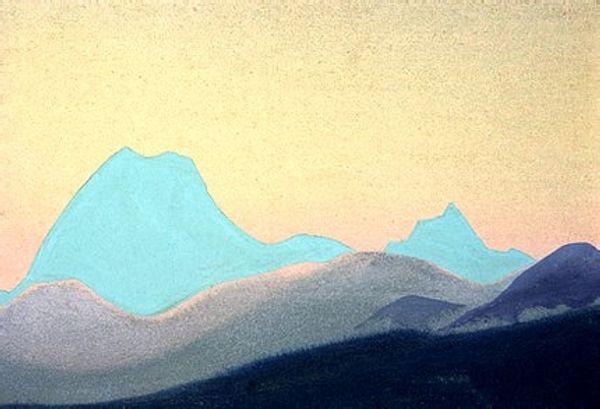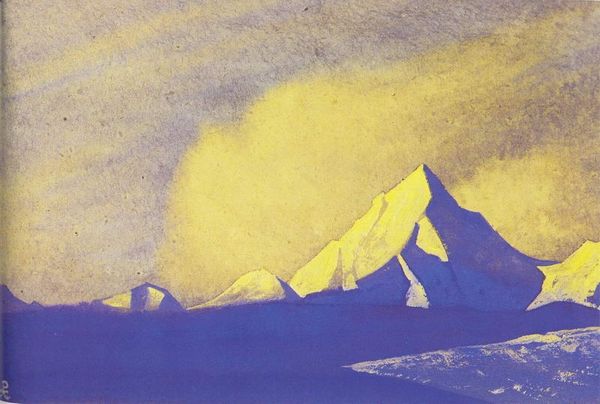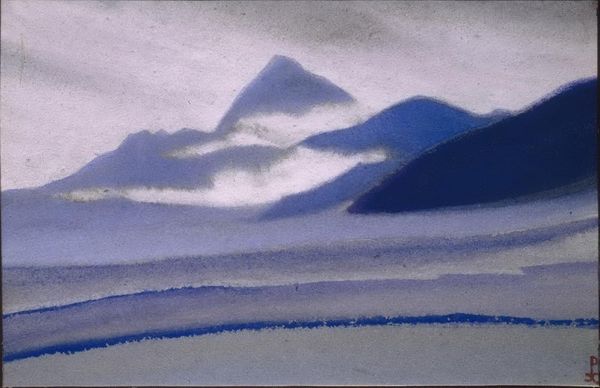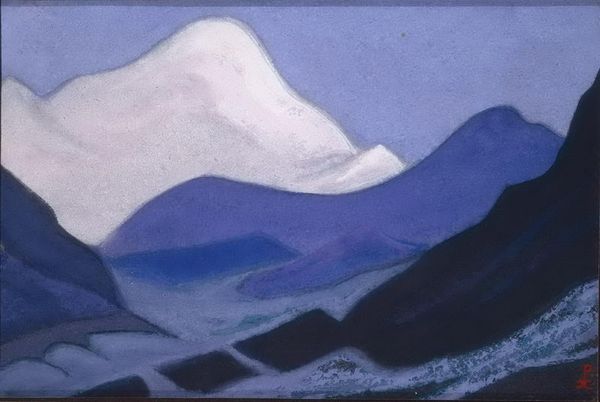
Copyright: Public domain
Editor: This is "Lahaul," a 1943 watercolor and tempera work by Nicholas Roerich. It's such a calming landscape, rendered in cool blues and whites. What can you tell me about its historical significance? Curator: Roerich's landscapes, including "Lahaul," are not simply depictions of nature; they’re loaded with symbolic and sociopolitical meaning. How do you perceive the relationship between art and political ideologies in his art? Editor: Hmm, I hadn’t thought about it that way. At first glance, the mountains feel spiritual. But the sharp peak also hints at power and authority. Curator: Precisely. Roerich was deeply involved in the Theosophical movement and sought to promote a sense of universalism through his art. His works became tools for cultural diplomacy. "Lahaul" uses landscape as a visual language to express a vision of interconnectedness. Editor: Cultural diplomacy through landscape… That's fascinating. Is that why his colors and forms feel almost simplified, accessible? Curator: Indeed. Roerich aimed for a style that could resonate with a wide audience, transcending cultural boundaries. The romantic style also aligned with then-contemporary socialist ideas about nature. Considering the global socio-political landscape of 1943, during the Second World War, how might this idealized landscape function as a form of escapism, or perhaps even a call for peace? Editor: It's interesting to think about it as a quiet protest or a beacon of hope amidst such global turmoil. Thanks for this deeper context. Curator: It's crucial to understand art within the framework of history and politics. Roerich's art provides an amazing glimpse into the fusion of spirituality and sociopolitical consciousness.
Comments
No comments
Be the first to comment and join the conversation on the ultimate creative platform.
